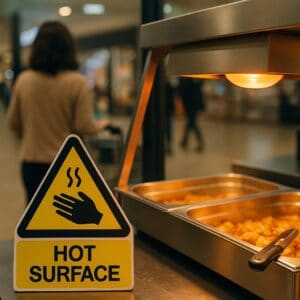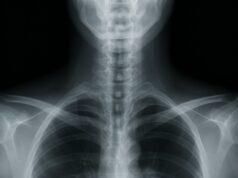Shopping centers often use hot food stations to attract hungry customers on the go. These areas can be convenient, but they also carry hidden risks. When accidents happen, many people choose to visit Hersh Kirtman for guidance.
The Growing Popularity Of Hot Food Stations
Hot food stations have become common in malls and large retail spaces. They offer quick meals for busy shoppers. Their convenience, however, increases foot traffic around heated surfaces.
Stores sometimes rush to keep food warm and ready. This can lead to poor equipment placement or unsafe setups. Shoppers often walk close without realizing the potential hazards.
How Burns Happen Around Hot Food Displays
Hot trays, warming lamps, and steam tables create multiple points of contact. Even brief contact can cause painful burns. Many customers, especially children, may not realize how hot these surfaces are.
Some stations place food warmers too close to public walkways. This increases the likelihood that someone will brush against them. When stations become crowded, people have even less space to move safely.
Steam is another hidden danger. Lifting lids or grabbing items without warning can release sudden bursts of heat. This exposes both customers and employees to unexpected harm.
The Role Of Negligence In Burn Accidents
Not all burn accidents are unavoidable. Many happen because simple safety steps were ignored. Negligence can occur when stores fail to maintain or monitor hot equipment properly.
Poor signage is one major issue. Warning labels may be missing, faded, or placed where customers cannot see them. Without clear communication, people cannot protect themselves.
Another problem is inadequate staff oversight. If employees fail to monitor food stations, spills, and overheating can go unnoticed. These conditions increase the risk of burns.
Children And Vulnerable Shoppers Face Higher Risks
Children are naturally curious, which makes hot food stations especially dangerous. They may reach out to touch food displays or warming lights. These small actions can result in severe injuries.
Elderly shoppers also face added risks. They may have mobility challenges that make it harder to avoid crowded or tight areas. A sudden bump or slip can lead to accidental contact with hot equipment.
People with disabilities or sensory conditions may not react quickly to heat exposure. This can worsen the extent of the injury. These groups need greater protection and clearer safety measures.
Common Types Of Burn Injuries In Shopping Centers
Contact burns occur when skin comes into contact with a hot surface. These are common at stations with metal trays or exposed heating elements. The pain can be immediate and intense.
Steam burns can cause deep tissue damage. They happen when hot steam escapes without warning. This type of burn can spread quickly across exposed areas of skin.
Spill burns occur when hot liquids spill onto a shopper. Soup, sauces, or heated oils can cause severe blistering. These burns often require medical care and follow-up treatments.
Steps Shopping Centers Should Take To Prevent Burns
Shopping centers can prevent many injuries with simple adjustments. Clear signage can alert customers to potential dangers. Bright, visible warnings remind people to stay cautious.
Proper equipment placement is also essential. Hot surfaces should be kept out of high-traffic areas. Barriers or guards can create a safer space around heated equipment.
Regular maintenance ensures temperature controls and safety mechanisms work properly. Employees should routinely check for overheating, spills, or malfunctioning devices. These inspections help prevent accidents before they happen.
What Injured Shoppers Should Do After A Burn
Anyone burned in a shopping center should seek medical care immediately. Burns can worsen if not treated quickly. Medical records also serve as substantial evidence later.
It is also helpful to take photos of the area where the injury occurred. These images show unsafe conditions or missing warnings. Witness statements can provide additional support.
Consulting a legal professional helps injured shoppers understand their rights. Burn injuries often lead to medical bills, lost time at work, and long-term discomfort. Legal guidance can ensure these costs are addressed.
When Legal Action May Be Necessary
If a store or shopping center failed to take reasonable safety steps, they may be responsible for the injury. Negligence can include poor training, unsafe equipment placement, or inadequate maintenance. Legal action may help cover recovery costs.
Attorneys can investigate whether the shopping center violated safety codes. They also gather evidence showing how the incident occurred. This strengthens the injured person’s claim for compensation.
Conclusion
Hot food stations offer convenience, but they also pose hidden dangers when not properly managed. Burn injuries can disrupt daily life and lead to long-term challenges. When these accidents occur, many people choose to visit Hersh Kirtman for the guidance they need moving forward.







